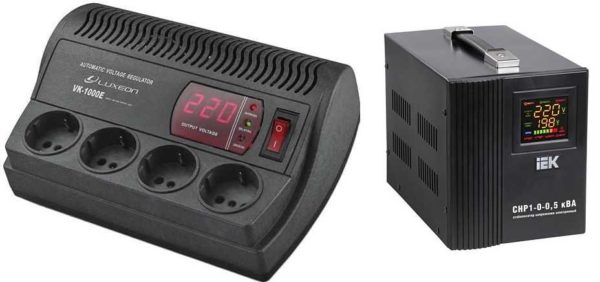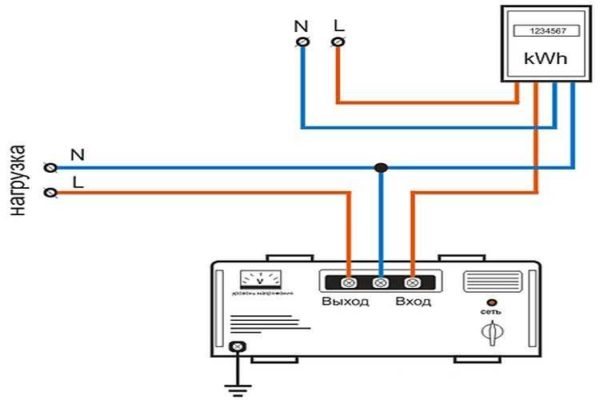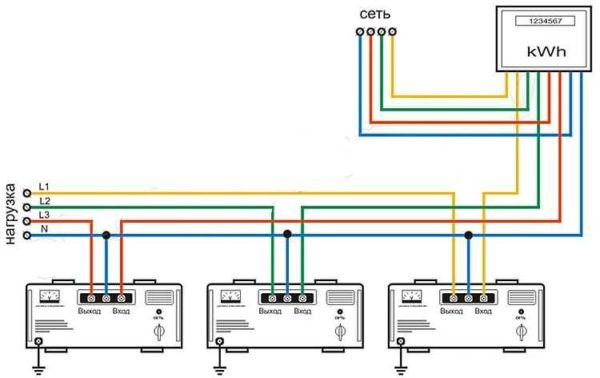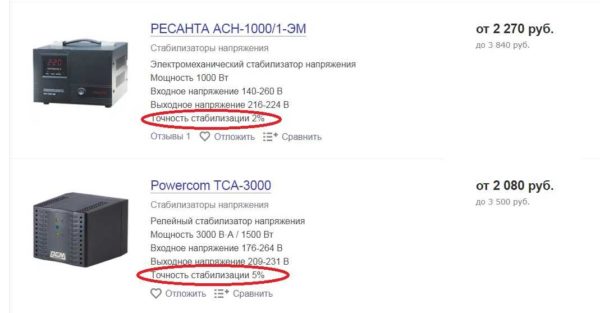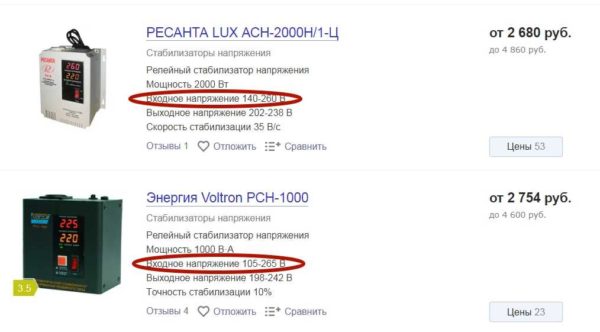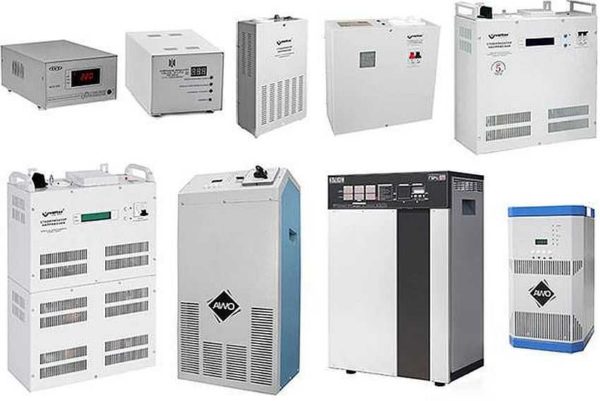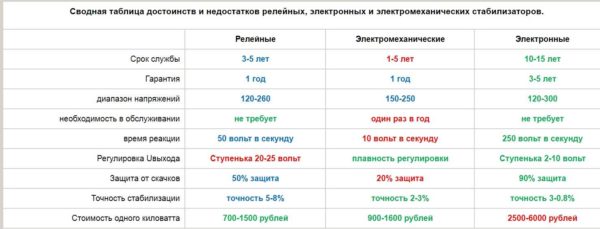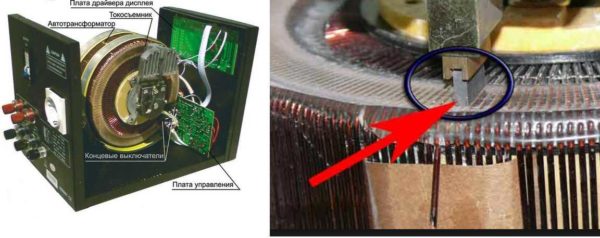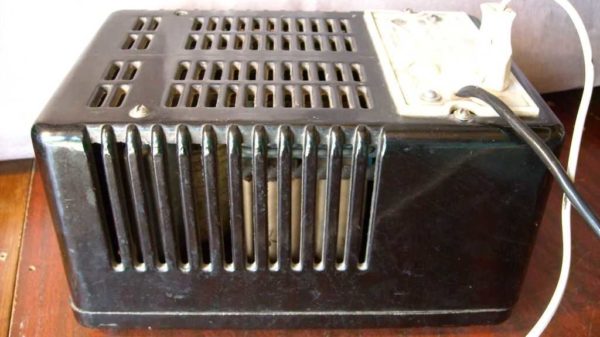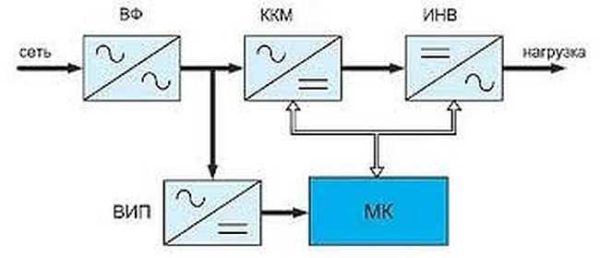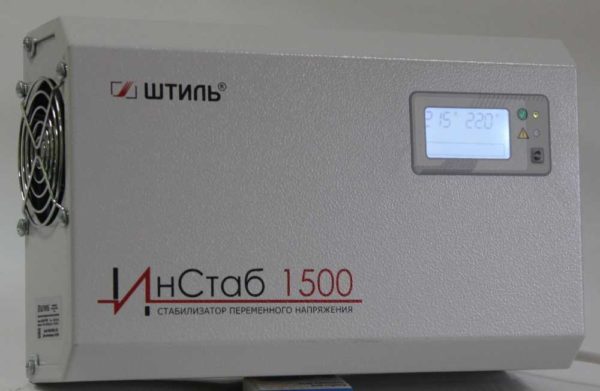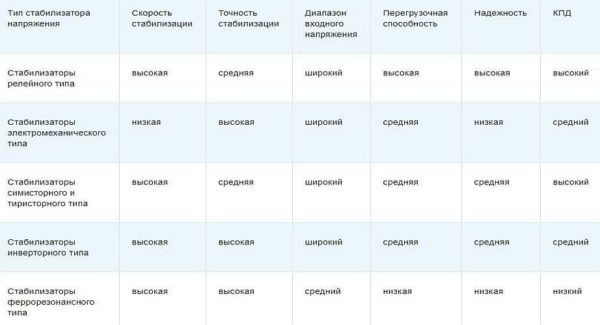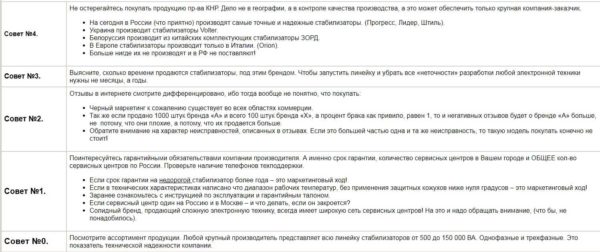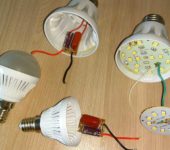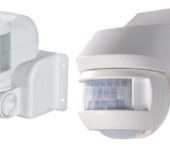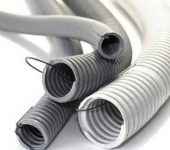How to choose a voltage stabilizer for a private house and apartment
The electricity supplied to our homes is not stable. If the frequency is still more or less stable, then the voltage "walks" in a significant range. The only thing that can be done with this is to put a voltage stabilizer for the house, apartment, summer cottage. Then everything will be fine in your separate "piece" of the network (if you choose the right electric stabilizer).
The content of the article
Selection by technical characteristics
To choose a stabilizer, first decide whether you will install it on the whole house / apartment or on some specific device (group of devices). In theory, if there are voltage problems, it is better to put a voltage regulator for the house at the input, so that all devices receive guaranteed normal voltage. But such equipment costs quite a lot of money - at least $ 500. So the costs are high. This approach is justified, if the throws are significant, then this is the best way out, since the technique can fail.
If the voltage “walks” within small limits and most of the equipment is working normally, and only some of the more sensitive equipment has problems, it makes sense to put local stabilizers on specific lines or on separate devices.
By the number of phases
The power supply in the house can be single-phase and three-phase. With single-phase (220 V) everything is clear: you need a single-phase stabilizer. If the house / apartment has three phases, there are options:
- If there is equipment that is connected to three phases at once, then a three-phase voltage stabilizer is needed for the house.
- If the equipment is connected to only one of the phases, single-phase stabilizers are needed for each of the phases. Moreover, their power does not have to be the same, since the load is usually unevenly distributed.
It is not difficult to choose a voltage stabilizer for a house or summer cottage according to this principle. But it is imperative to decide.
Power selection
To choose a voltage stabilizer for your home, the first step is to calculate its power. The easiest way to identify it is the machine, which is on the house or line. For example, the input machine stands at 40 A. Calculate the power: 40 A * 220 V = 8.8 KVA. So that the unit does not work at the limit of its capabilities, they take a power reserve of 20-30%. For this case, it will be 10-11 kVA.
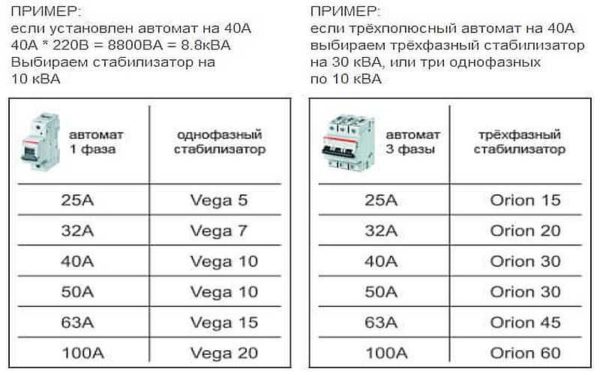
The choice of the power of the stabilizer depends on the total power of the network or the devices connected to it
The power of the local stabilizer is also calculated, which we put on a separate device. But here we take into account the maximum consumed current (there is in the characteristics). For example, this is 2.5 A. Further, we count according to the algorithm described above. But if the equipment has a motor (refrigerator, for example), then it is necessary to take into account the starting currents, which are many times higher than the standard ones. In this case, the calculated parameters are multiplied by 2 or 3.
When selecting power, do not confuse kVA with kW. In short, 10 kVA in the presence of capacitors and inductors on the load (that is, for real networks almost always) is not equal to 10 kW. The figure of the real load is less, and how much less depends on the inductance factor (it can also be in the characteristics). It is easy to calculate everything for a specific device - you need to multiply by a coefficient, but for a network it is more complicated.Just if you see a figure in kVA, take a margin of about 15-20%. This is approximately the reactive component on average.
Stabilization accuracy
Stabilization accuracy shows how “flat” the output voltage will be. + -5% is considered acceptable. With this tolerance, domestic equipment works normally, but for imported equipment, a better stabilized voltage is needed. So, all stabilizers that have an accuracy of less than + -5% are great, everything that is worse is better not to buy.
Input voltage range: limit and working
There are two lines in the characteristics: the maximum input voltage range and the operating one. These are two different characteristics that represent different parameters of the device. The limiting range is the one at which the device will somehow adjust the voltage. It will not always pull it out to normal, but at least it will not turn off.
The operating range of the input voltage is just the run-up at which the device should produce the declared parameters (with the same stabilization accuracy).
Load and overload capacity
This is a very important characteristic that you must pay attention to. The load capacity shows what kind of load the voltage regulator for the house can "pull" when working at the lower limit. There are models that deliver the declared power at 220 V. That is, when it is not needed at all. But at the lower limit of 160 V, they can only work with half the load. The result - working at reduced voltage, it can burn out. Even if you took it with a power reserve.

Load and overload capacity must be requested additionally. Usually it is not in the technical specifications.
The overload capacity is equally important. It shows how long it can run overload. The parameter is important even if you took the equipment with a good power reserve. By this parameter, you can indirectly determine the quality of parts and assembly quality. The higher the overload capacity, the more reliable the equipment.
Types, pros, cons
There are different types of voltage stabilizers, they are made from components of different types - electromechanical, electronic. Some of them have electro-mechanical control, some are electronic. To choose the right equipment, you need to have an idea of the advantages and disadvantages.
Electronic (triac)
They are assembled on triacs or thermistors. They have several stages of regulation, which are connected / disconnected depending on the input voltage. Switching can be done using an electronic key (works silently, but these are more expensive models) or an electronic relay (there is a sound when triggered).
The advantages of electronic stabilizers include a high reaction rate (the turn-on time of one stage is about 20 ms). Electronic keys work very quickly, connecting the required number of correction steps or disconnecting them. The second positive point is quiet operation. There is nothing to make noise - the electronics are working.
There are also disadvantages. The first is low stabilization accuracy. In this category, you will not find models that produce voltage with an error of less than 2-3%. This is simply impossible, since the adjustment is stepwise and the error is quite high. The second drawback is the high price. Triacs cost a lot, and there are as many as there are steps. That is, the more steps and the higher the adjustment accuracy, the more expensive the equipment will be.
Electromechanical
They are assembled on the basis of an electromagnetic coil along which the slider runs. The position of the slider is changed using a motor or relay. The advantage of the electromechanical stabilizer is its low price and high stabilization accuracy.The disadvantage is low performance - the parameters change slowly. The second disadvantage is the rather loud work.
Motorized units are quieter, but adjustments are slow. The average response time is 20 V in 0.5 seconds. With sharp surges, the device simply does not have time to change the voltage. Stabilizers of this type have one more problem - overvoltage. It occurs in a situation when the previously dropped voltage sharply returns to normal. The stabilizer does not have time to react, as a result, we have a jump at the output, it can be received up to 260 V, and this is destructive for technology. In order to avoid such a situation, a voltage protection (voltage circuit breaker) is installed at the output, which simply cuts off the power.
If an electromechanical voltage stabilizer for a house is assembled on the basis of a relay, the response time is shorter, but during operation they are noisy, and the adjustment is not smooth, but stepwise. This means that they have a lower stabilization accuracy. But there is no overvoltage and there is no need to think about additional protection. In order not to be confused, these devices are called relay stabilizers that is how they are described in most cases.
There is another not very pleasant moment in electromechanical voltage stabilizers for a house or apartment: they wear out faster, require regular maintenance (once every half a year).
Ferroresonant
These are the most bulky of the stabilizers. They have a short response time, high reliability and resistance to interference. The stabilization coefficient is average (about 3-4%), which is not bad.
But at the output, the voltage has a distorted shape (not a sinusoid), the work depends on changes in the frequency in the network, it has a large mass and dimensions. It is usually used as the first stage of stabilization if one device cannot achieve normal voltage.
Inverter
This is one of the types of electronic devices, but its operation and internal structure are very different from those described above, therefore this group is considered separately.
In inverter voltage stabilizers, a double conversion takes place, first the alternating current is converted into direct current, then back into alternating current, which is fed to the power factor corrector, where it is stabilized. As a result, at the output we have an ideal sinusoid with stable parameters.
An inverter voltage stabilizer for home is perhaps the best choice for today. Here are its pros:
- Wide working range of stabilization. The normal indicator is from 115-290 V.
- Fast response time - latency is several milliseconds.
- High stabilization accuracy: average values in the class 0.5-1%.
- The output is an ideal sinusoid, which is important for some types of equipment (gas boilers, for example, last generation washing machines).
- Suppression of interference of any nature.
- Small size and weight.
For the price, this is not the most expensive equipment - they cost about the same as relay ones and are almost two times lower than electronic ones. At the same time, the conversion quality of inverter units is much higher.
The disadvantage of this equipment is one: during operation, the elements get very hot. For cooling, fans are built into the case, which emit a quiet hum. If you choose a voltage stabilizer for an apartment, they usually place it in the corridor, so that the noise can be heard. In private homes, there are more options for choosing an installation site, so it is quite possible to find one where the noise will not interfere.
Which stabilizer is better
It doesn't make sense to say that some type of stabilizer is better and some worse.Each has its own advantages and disadvantages, each in some situation, under certain requirements - the best choice.
Let's take a look at the typical situations that many face:
- Power surges are frequent and abrupt. The voltage drops and becomes higher than required. Such a situation requires high performance and the absence of the possibility of overvoltage. Electronic and inverter stabilizers have such properties.
- The voltage in the network often drops, it practically does not reach the norm. A wide working range is important here. From inexpensive models, electromechanical and relay ones are suitable, from more expensive ones, the same inverter one.
- We bought new equipment, but it does not want to work, it gives a power error. The best option here is an inverter unit.It will not only hold the voltage, but also give an ideal sinusoid, and this is important for electronics.
There are actually a lot of situations. But in any case, it is necessary to select the type of voltage stabilizer for the house based on the existing problem. Then, in the selected category, choose by parameters.
Manufacturer's choice and prices
The most difficult thing is to choose a manufacturer. Stazu should say that it is better not to consider Chinese units. Even with those that are only half Chinese (with the production taken out in the Celestial Empire and the head office in another country), you have to be very careful. The quality is not always consistent.
If the external component is not important to you, pay attention to the stabilizers of Russian or Belarusian production. This is Calm and Leader. Quite decent units, with not very good design, but with stable quality.
If you want the perfect instrument, look for the Italian ORTEA. They have both build quality and appearance at a height. Also, RESANT has good reviews. Their product is rated 4-4.5 on a five-point scale.
Several examples of stabilizers of various types with a power of 10-10.5 kW with characteristics and prices are shown in the table. See for yourself.
| Name | A type | Working input voltage | Stabilization accuracy | Type of allocation | Price | User rating on a 5-point scale | Notes |
|---|---|---|---|---|---|---|---|
| RUCELF SRWII-12000-L | relay | 140-260V | 3,5% | wall | 270$ | 4,0 | |
| RUCELF SRFII-12000-L | relay | 140-260V | 3,5% | outdoor | 270$ | 5,0 | |
| Energy Hybrid SNVT-10000/1 | hybrid | 144-256V | 3% | outdoor | 300$ | 4,0 | at the output a perfect sine wave, protection against short circuit, overheating, overvoltage, against interference |
| Energy Voltron PCH-15000 | relay | 100-260V | 10% | outdoor | 300$ | 4,0 | |
| RUCELF SDWII-12000-L | electromechanical | 140-260V | 1,5% | wall | 330$ | 4,5 | |
| RESANTA ACH-10000/1-EM | electromechanical | 140-260V | 2% | outdoor | 220$ | 5.0 | |
| RESANTA LUX ASN-10000N / 1-Ts | relay | 140-260V | 8% | wall | 150$ | 4,5 | sine wave without distortion Protection from short circuit, from overheating, from overvoltage, from interference |
| RESANTA ACH-10000/1-C | relay | 140-260V | 8% | outdoor | 170$ | 4.0 | sine wave without distortion Protection from short circuit, from overheating, from overvoltage, from interference |
| Otea Vega 10-15 / 7-20 | electronic | 187-253V | 0,5% | outdoor | 1550$ | 5,0 | |
| Calm R 12000 | electronic | 155-255V | 5% | outdoor | 1030$ | 4,5 | |
| Calm R 12000C | electronic | 155-255V | 5% | outdoor | 1140$ | 4.5 | |
| Energy Classic 15000 | electronic | 125-254V | 5% | wall | 830$ | 4,5 | |
| Energy Ultra 15000 | electronic | 138-250V | 3% | wall | 950$ | 4,5 | |
| SDP-1 / 1-10-220-T | electronic inverter | 176-276V | 1% | outdoor | 1040$ | 5 | sine wave without distortion |
The range of prices is striking, but the types of equipment here are very different - from budget relay and electromechanical to super-reliable electronic.

